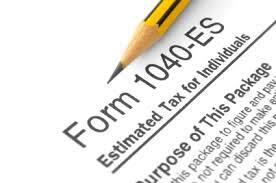
As a responsible taxpayer, understanding your obligations and staying on top of your tax payments is crucial to avoid penalties and ensure a smooth tax-filing process. One important aspect of tax compliance is paying estimated taxes, which estimates the tax liability for the current year.
What are Estimated Taxes?
Estimated taxes are periodic tax payments made by individuals and businesses to the Internal Revenue Service (IRS) throughout the year. Unlike employees who have taxes withheld from their paychecks, self-employed individuals, freelancers, and those with significant income from other sources are typically required to make estimated tax payments.
Who Needs to Pay Estimated Taxes?
Suppose you expect to owe $1,000 or more in taxes after subtracting tax withholdings and credits, and your withholdings and credits are less than 90% of the current year's tax liability or 100% (110% for high-income taxpayers) of the prior year's tax liability. In that case, you are generally required to pay estimated taxes.
Self-employed individuals, including sole proprietors, partnership partners, and S corporation shareholders, are typically required to make estimated tax payments. Additionally, individuals with significant income from rental properties, investments, and other sources that are not subject to withholding may also need to pay estimated taxes.
When to Pay Estimated Taxes
The IRS has established specific due dates for estimated tax payments. These dates are divided into four payment periods throughout the year:
First Quarter: January 1 to March 31, with a payment due date of April 15.
Second Quarter: April 1 to May 31, with a payment due date of June 15.
Third Quarter: June 1 to August 31, with a payment due date of September 15.
Fourth Quarter: September 1 to December 31, with a payment due date of January 15 of the following year.
It's important to note that if the due date falls on a weekend or a federal holiday, the payment is considered timely if made on the next business day.
How to Calculate Estimated Taxes
To accurately calculate your estimated tax payments, you need to estimate your total taxable income, deductions, and credits for the year. Here's a step-by-step process to help you:
Estimate your total income: Project your income for the current year, including self-employment income, rental income, investment income, and any other taxable income.
Estimate deductions and credits: Consider deductions such as business expenses, self-employment tax, student loan interest, and retirement contributions. Calculate applicable tax credits such as the Child Tax Credit, Earned Income Tax Credit, or education-related credits.
Determine your taxable income: Subtract your estimated deductions and credits from your estimated income to arrive at your taxable income.
Calculate your estimated tax liability: Apply the appropriate tax rates to your taxable income to calculate your estimated tax liability.
Divide your estimated tax liability by four: Since estimated taxes are paid quarterly, divide your estimated tax liability by four to determine the amount you need to pay each quarter.
How to Pay Estimated Taxes
The IRS offers various methods to pay estimated taxes. Choose the one that is most convenient for you:
Electronic Federal Tax Payment System (EFTPS): This free service allows you to make payments online or by phone. It would be best if you enrolled in advance to use this system.
Direct Pay: The IRS Direct Pay system enables you to make payments directly from your bank account on the IRS website. It's a simple and secure method.
Credit or Debit Card: Another option is paying by credit or debit card. However, be aware that there may be processing fees associated with this method.
Check or Money Order: You can also choose to pay by check or money order. Make your payment payable to the "United States Treasury" and include your name, address, Social Security number, and "Form 1040-ES" on the payment.
Electronic Funds Withdrawal (EFW): If you e-file your tax return, you can authorize an electronic funds withdrawal when you file your return to pay your estimated taxes.
For your records, it's important to retain proof of payment, such as confirmation numbers, receipts, or canceled checks.
Consequences of Not Paying Estimated Taxes
Failure to pay estimated taxes or underpaying can result in penalties and interest charges. The IRS may impose the Underpayment of Estimated Tax Penalty, which is calculated based on the amount of the underpayment and the interest rate set by the IRS. Staying current with your estimated tax payments can help you avoid these penalties and unnecessary additional costs.
Conclusion
Paying estimated taxes is essential for tax compliance for self-employed individuals and others with significant income from non-wage sources. By understanding when and how to pay estimated taxes, you can fulfill your tax obligations and avoid penalties. Take the time to accurately estimate your tax liability and choose a suitable payment method to stay on top of your tax responsibilities throughout the year. Suppose you have any specific questions regarding your estimated tax payments. In that case, it's advisable to consult a tax professional or visit the official IRS website for the most up-to-date information.
FOR MORE INFORMATION ON HOW PAT RASKOB CAN BEST HELP YOU WITH YOUR TAX FILING NEEDS, PLEASE CLICK THE BLUE TAB ON THIS PAGE.
THANKS FOR VISITING.
Pat Raskob